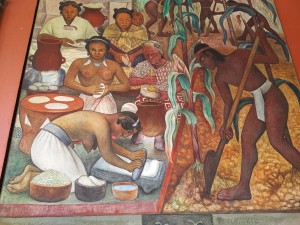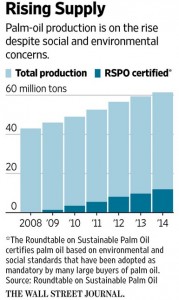More on corporate funding of nutrition research: exchange of letters
In January this year, JAMA Internal Medicine published my Viewpoint on corporate funding of nutrition research: science or marketing.
Richard Kahn, former chief scientist and medical officer of the American Diabetes Association, wrote a letter in reply (see below for more about him**). The journal published his letter, along with my response, in its current issue. Here’s what I said.
In Reply Dr Kahn requests evidence that nutrition research funded by food companies is of lesser quality than studies funded by independent agencies or performed by investigators with nonfinancial conflicts of interest. Concerns about such issues are relatively recent; few published studies address them directly. Instead, concerns about industry sponsorship of nutrition research derive from comparisons with the results of studies of funding by tobacco, chemical, drug, or medical device companies. This research typically finds industry-sponsored studies to report results more favorable to the products of the sponsor than studies not funded by industry. It identifies subtle rather than substantive differences in the quality of this research; industry-funded studies are more likely to underreport unfavorable results and interpret neutral results more positively.1 When results are negative, they are less likely to be published.2
Between March 2015 and March 2016, I identified 166 industry-funded nutrition research studies and posted and discussed them on my blog.3 Of these, 154 reported results favorable to the interest of the sponsor; only 12 reported contrary results. The few studies systematically examining the influence of industry funding on nutrition research tend to confirm results obtained from other industries. For example, a systematic review comparing industry-funded and nonindustry-funded trials of probiotics in infant formula reported no association of funding source with research quality. Industry-funded studies, however, seemed more likely to report favorable conclusions unsupported by the data.4
Dr Kahn states that sponsored studies often specify that the funder had no role in the study. Only recently have some journals required such statements, and I am unaware of research on the extent of this practice or authors’ adherence to it. Among the 166 industry-funded studies that I reviewed, few disclosed involvement of a sponsor.
Dr Kahn asks whether industry funding is any more biasing than career self-interest or intellectual passion. Unlike industry funding, self-interest and passions are intrinsic to every scientist who conducts research, are a matter of public record, cannot be eliminated, and have not been shown to consistently bias research results in the same ways as industry funding.5 Fortunately, nutrition societies and research institutions are developing policies to manage financial relationships with industry.6 Such policies hold promise for preventing financial conflicts of research in nutrition research.
1. Lundh A, Sismondo S, Lexchin J, Busuioc OA, Bero L. Industry sponsorship and research outcome. Cochrane Database Syst Rev. 2012;12:MR000033. PubMed
2. Rising K, Bacchetti P, Bero L. Reporting bias in drug trials submitted to the Food and Drug Administration: review of publication and presentation. PLoS Med. 2008;5(11):e217. PubMed | Link to Article
3. Nestle M. Food Politics Blog. https://foodpolitics.com/. Accessed March 2, 2016.
4. Mugambi MN, Musekiwa A, Lombard M, Young T, Blaauw R. Association between funding source, methodological quality and research outcomes in randomized controlled trials of synbiotics, probiotics and prebiotics added to infant formula: a systematic review. BMC Med Res Methodol. 2013;13:137. PubMed | Link to Article
5. Bero L. What is in a name? Nonfinancial influences on the outcomes of systematic reviews and guidelines. J Clin Epidemiol. 2014;67(11):1239-1241. PubMed | Link to Article6. Charles Perkins Centre. Engagement with Industry Guidelines 2015. University of Sydney, 2015. https://intranet.sydney.edu.au/perkins/research-support/engaging-with-industry.html. Accessed March 2, 2016.









 Our group was interested in Cuban agriculture and food systems. This post deals with rural agricultural production. In subsequent posts, I’ll talk about urban farming and what the Cuban food scene looks like.
Our group was interested in Cuban agriculture and food systems. This post deals with rural agricultural production. In subsequent posts, I’ll talk about urban farming and what the Cuban food scene looks like.


